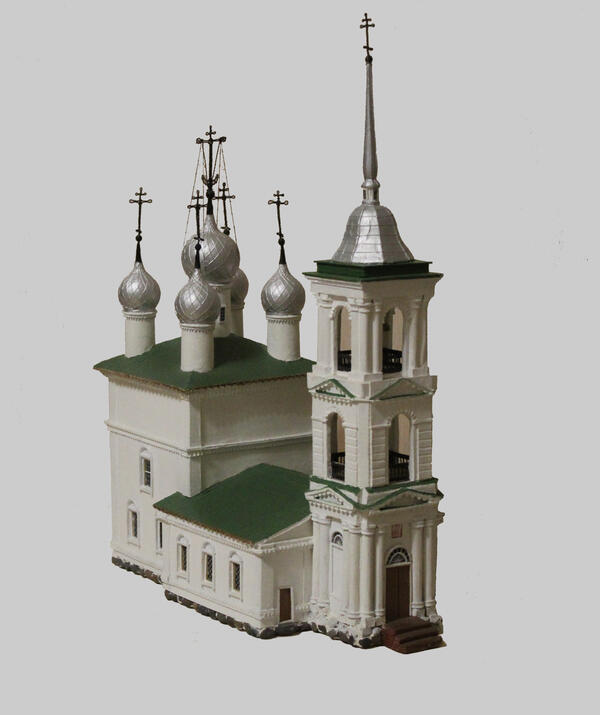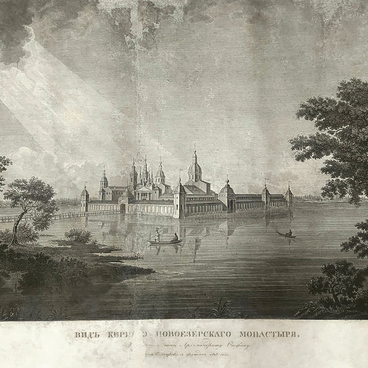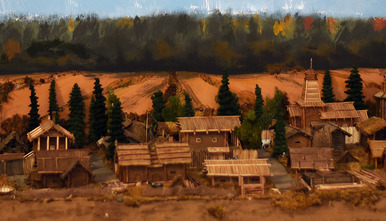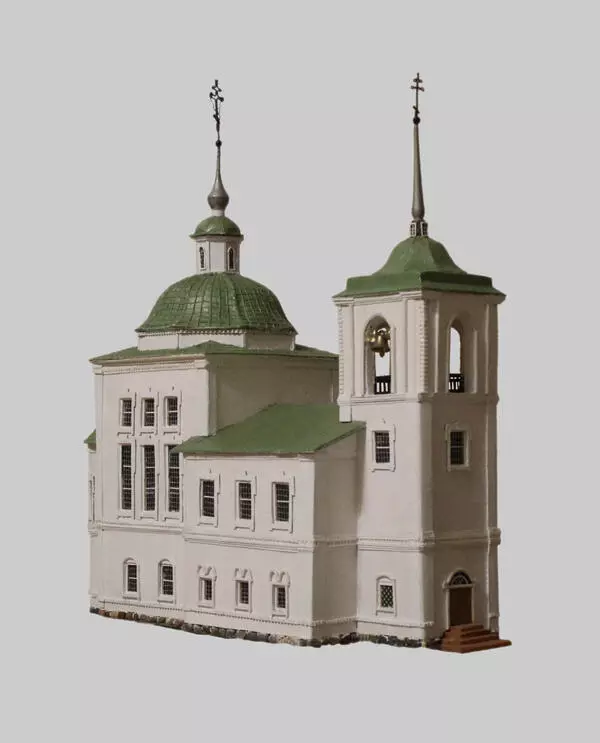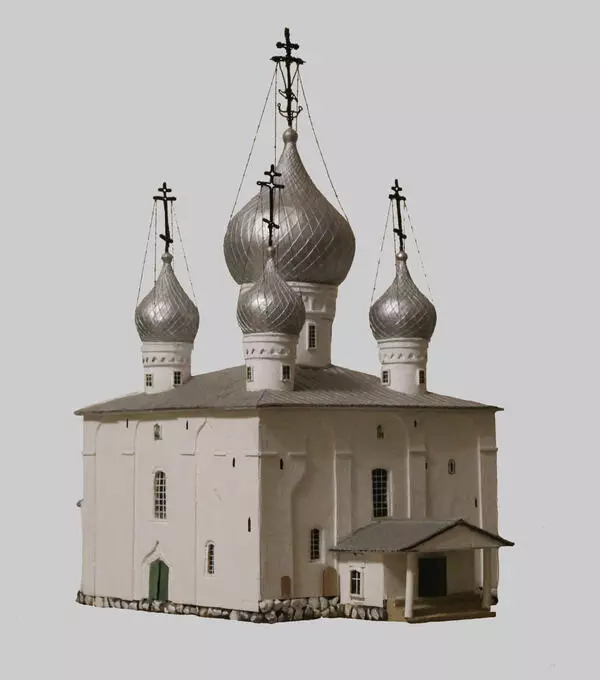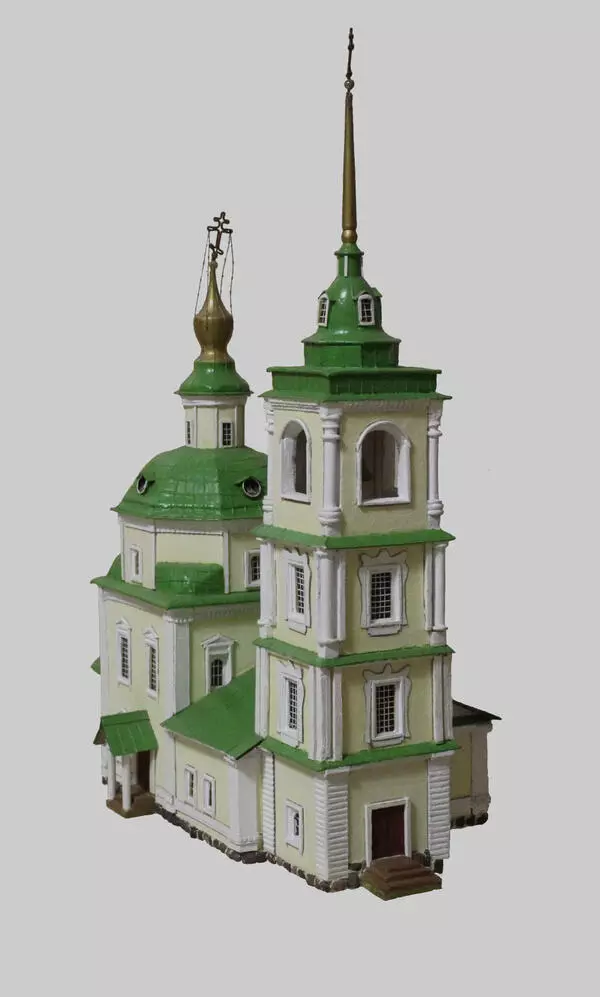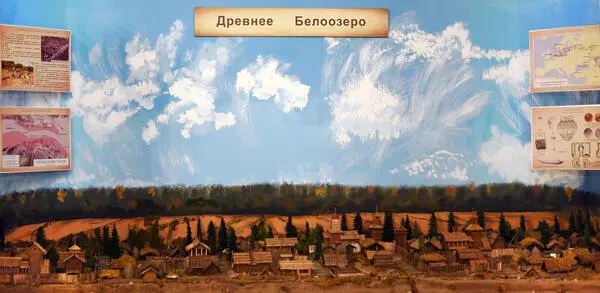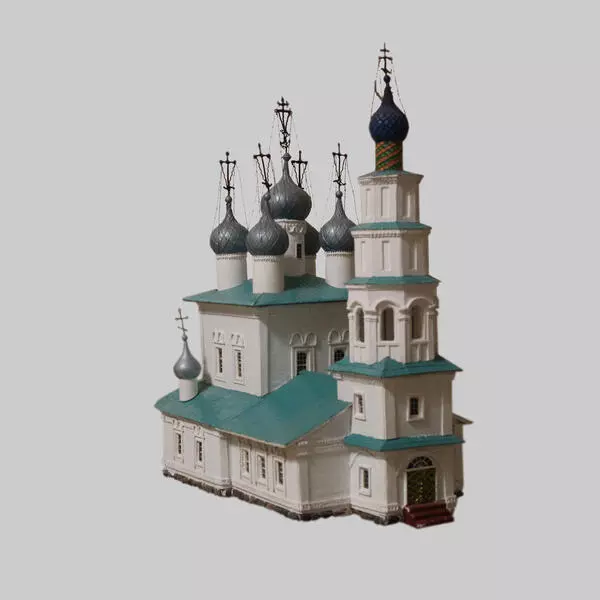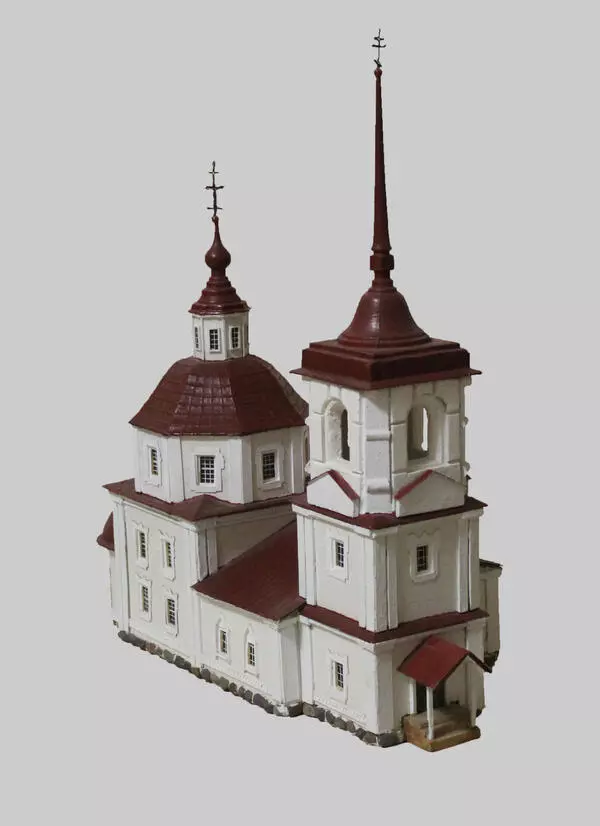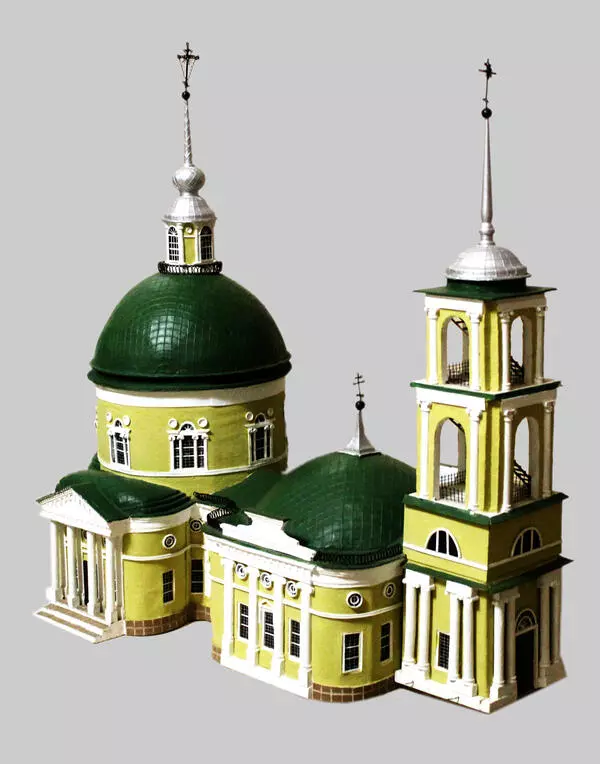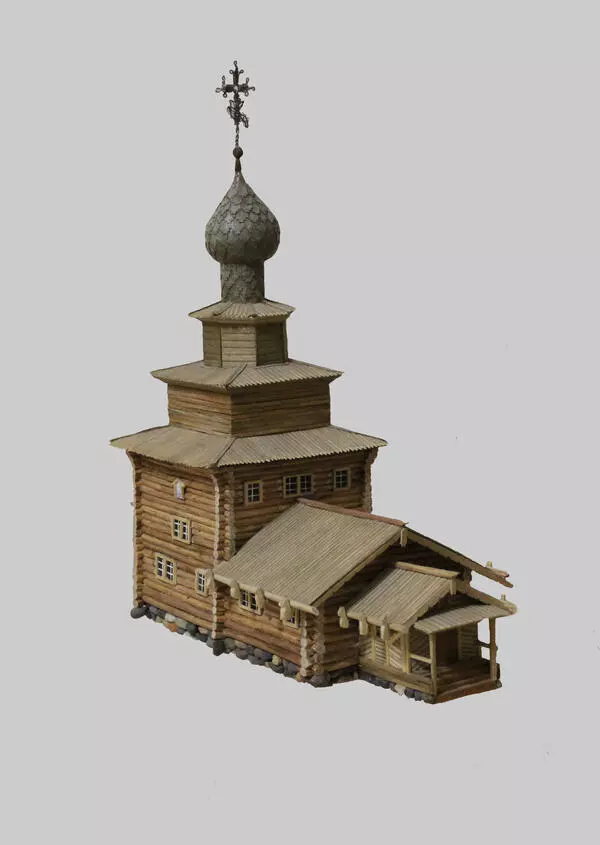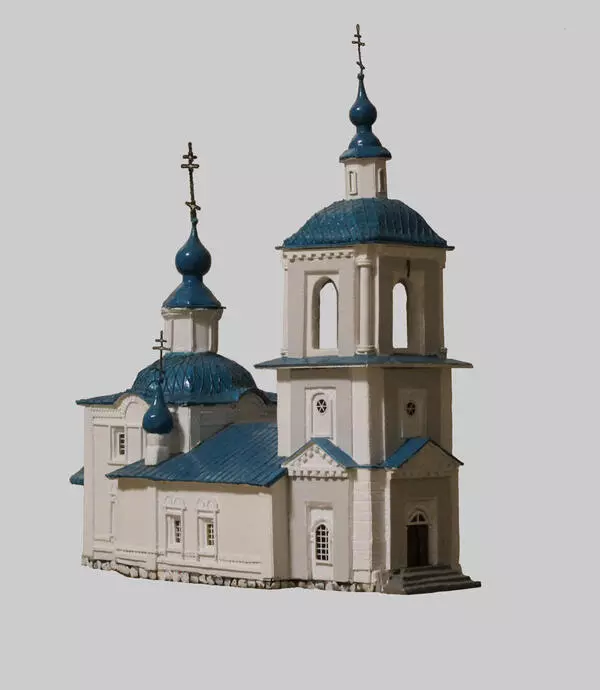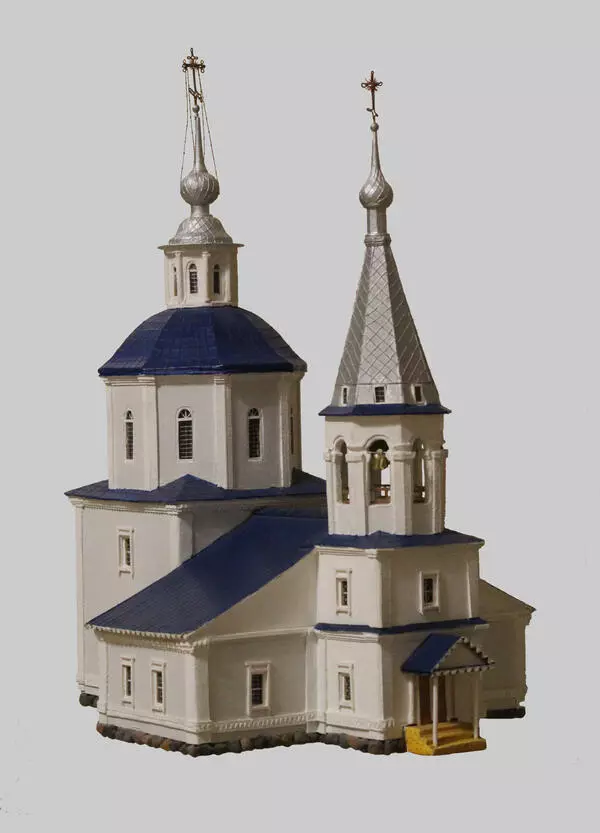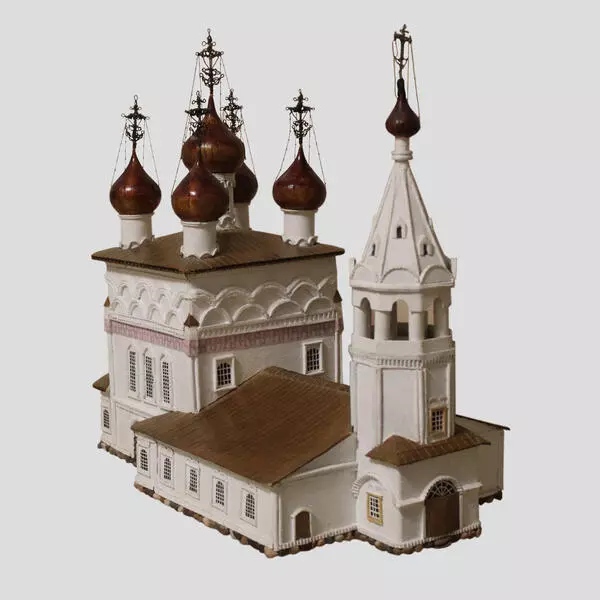The exact date of the construction of the temple in the name of the Resurrection of Jesus Christ in Belozersk is unknown. The Re-inventory book of the City of Belo-ozero written and accounted for by Grigory Ivanovich Kvashnin and the scribe Postnik Dementyev of 1617/ says that in the city there was a ‘ruzhnOy’, that is receiving ‘ruga’ -- the maintenance from the state or princely treasury, temple of the Resurrection of Our Lord Jesus Christ. Together with the nearby temple of Elijah the Prophet it was ‘burned by Lithuanian people’ in 1612.
According to an extract from the Belozersk cadastres of the 1670s, there was a wooden church in the city in the name of the Resurrection of Christ with side-altars. The temple was cellular, that is, consisted of several wooden rectangular timber cribs, covered with V-shaped roofs. There was also a refectory and a high, uncovered porch – a parvis. The church was covered with wooden lath - thin plates of wood. Also there was a bell tower with four bells at the temple. A priest named Ivan served at the church.
The ‘record book’ of churches and priests of Belozersk County and Charond District of 1693 says that in ‘Belo ozero suburb’ there was a church ‘of the Christ’s Resurrection’ with a side-altar in the name of the Beheading of St. John the Baptist and Elijah the Prophet of Ilya. The priest Ivan Fedorov served at the church, he had a son, Mikhail, “who was taught to read “. The parish was made up 12 “souls”.
The stone church was built in 1715 instead of the dilapidated wooden church with the donations of parishioners. The temple was a rectangular building with two tiers, five heads and a refectory. The three-tier bell tower in the style of classicism was built later, in 1831. The refectory had a side-altar of the Beheading of St. John the Baptist. And from the 1830s it also had a side-altar in the name of MitrofAn VorOnezhsky. The temple was located on Desyatskaya street or Voskresenskaya (current name - Karl Marx Street), further east than the Church of Assumption and Epiphany churches on an elevation half a verst (roughly half a kilometer) from the bypass canal and the lake.
In the 1860s, the church’s income per year was: up to 9 rubles from the sale of candles, wallet donations - up to 20 rubles and charity box donations - up to 23 rubles. The parish was made up of 321 people, the vast majority of whom were bourgeoisie.
In the Soviet years, in the early 1930s, the church was closed and later destroyed. Local Belozersk historians recount how a cross was toppled and went so deep into the ground that all attempts to pull it out were in vain. The place was simply covered with earth. A sports facility was later built on the site of the demolished temple.
According to an extract from the Belozersk cadastres of the 1670s, there was a wooden church in the city in the name of the Resurrection of Christ with side-altars. The temple was cellular, that is, consisted of several wooden rectangular timber cribs, covered with V-shaped roofs. There was also a refectory and a high, uncovered porch – a parvis. The church was covered with wooden lath - thin plates of wood. Also there was a bell tower with four bells at the temple. A priest named Ivan served at the church.
The ‘record book’ of churches and priests of Belozersk County and Charond District of 1693 says that in ‘Belo ozero suburb’ there was a church ‘of the Christ’s Resurrection’ with a side-altar in the name of the Beheading of St. John the Baptist and Elijah the Prophet of Ilya. The priest Ivan Fedorov served at the church, he had a son, Mikhail, “who was taught to read “. The parish was made up 12 “souls”.
The stone church was built in 1715 instead of the dilapidated wooden church with the donations of parishioners. The temple was a rectangular building with two tiers, five heads and a refectory. The three-tier bell tower in the style of classicism was built later, in 1831. The refectory had a side-altar of the Beheading of St. John the Baptist. And from the 1830s it also had a side-altar in the name of MitrofAn VorOnezhsky. The temple was located on Desyatskaya street or Voskresenskaya (current name - Karl Marx Street), further east than the Church of Assumption and Epiphany churches on an elevation half a verst (roughly half a kilometer) from the bypass canal and the lake.
In the 1860s, the church’s income per year was: up to 9 rubles from the sale of candles, wallet donations - up to 20 rubles and charity box donations - up to 23 rubles. The parish was made up of 321 people, the vast majority of whom were bourgeoisie.
In the Soviet years, in the early 1930s, the church was closed and later destroyed. Local Belozersk historians recount how a cross was toppled and went so deep into the ground that all attempts to pull it out were in vain. The place was simply covered with earth. A sports facility was later built on the site of the demolished temple.

